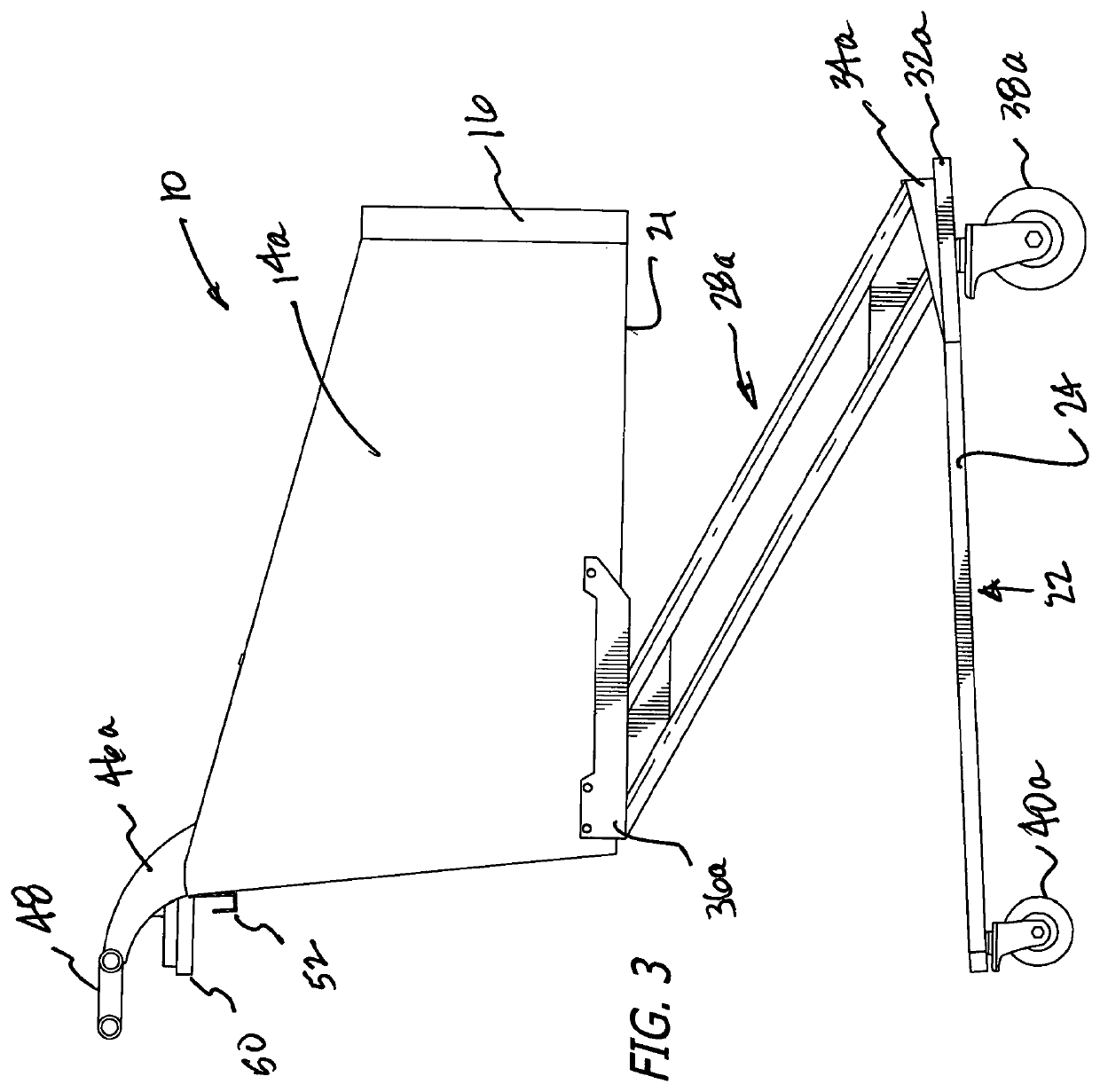Cart
a cart and wheel technology, applied in the field of carts, can solve the problems of unrelenting efforts to improve the design and functionality of the shopping cart, suffer from significant drawbacks, and limited per-visit purchases of customers in his stores, and achieve the effects of convenient child seat placement, convenient nesting/stacking, and attractive appearan
- Summary
- Abstract
- Description
- Claims
- Application Information
AI Technical Summary
Benefits of technology
Problems solved by technology
Method used
Image
Examples
Embodiment Construction
[0016]The preferred embodiments provide, among other things, carts that have larger and open access to the bottom shelf from the rear of the cart, a bottom shelf that is much larger relative to the size of the cart's basket and overall footprint, a bottom shelf that is not tapered in width toward the front of the cart as in the traditional cart, provides for easier nesting / stacking capability, a sleek, attractive appearance, improved child seat, an improved handle assembly that will accommodate various positions, a cup and accessory holder attached to the rear of the cart on or near the handle that can include strategically placed and easily accessible holders for cup(s), smart phone, and tablet devices), hooks on the outside of the cart basket for purses and reusable grocery bags, and dedicated space for prominently placed and visible on-cart advertising.
[0017]Unlike the traditional “Goldman-type” cart in which the carts are able to nest in telescoping fashion because the front whe...
PUM
 Login to View More
Login to View More Abstract
Description
Claims
Application Information
 Login to View More
Login to View More - R&D
- Intellectual Property
- Life Sciences
- Materials
- Tech Scout
- Unparalleled Data Quality
- Higher Quality Content
- 60% Fewer Hallucinations
Browse by: Latest US Patents, China's latest patents, Technical Efficacy Thesaurus, Application Domain, Technology Topic, Popular Technical Reports.
© 2025 PatSnap. All rights reserved.Legal|Privacy policy|Modern Slavery Act Transparency Statement|Sitemap|About US| Contact US: help@patsnap.com



